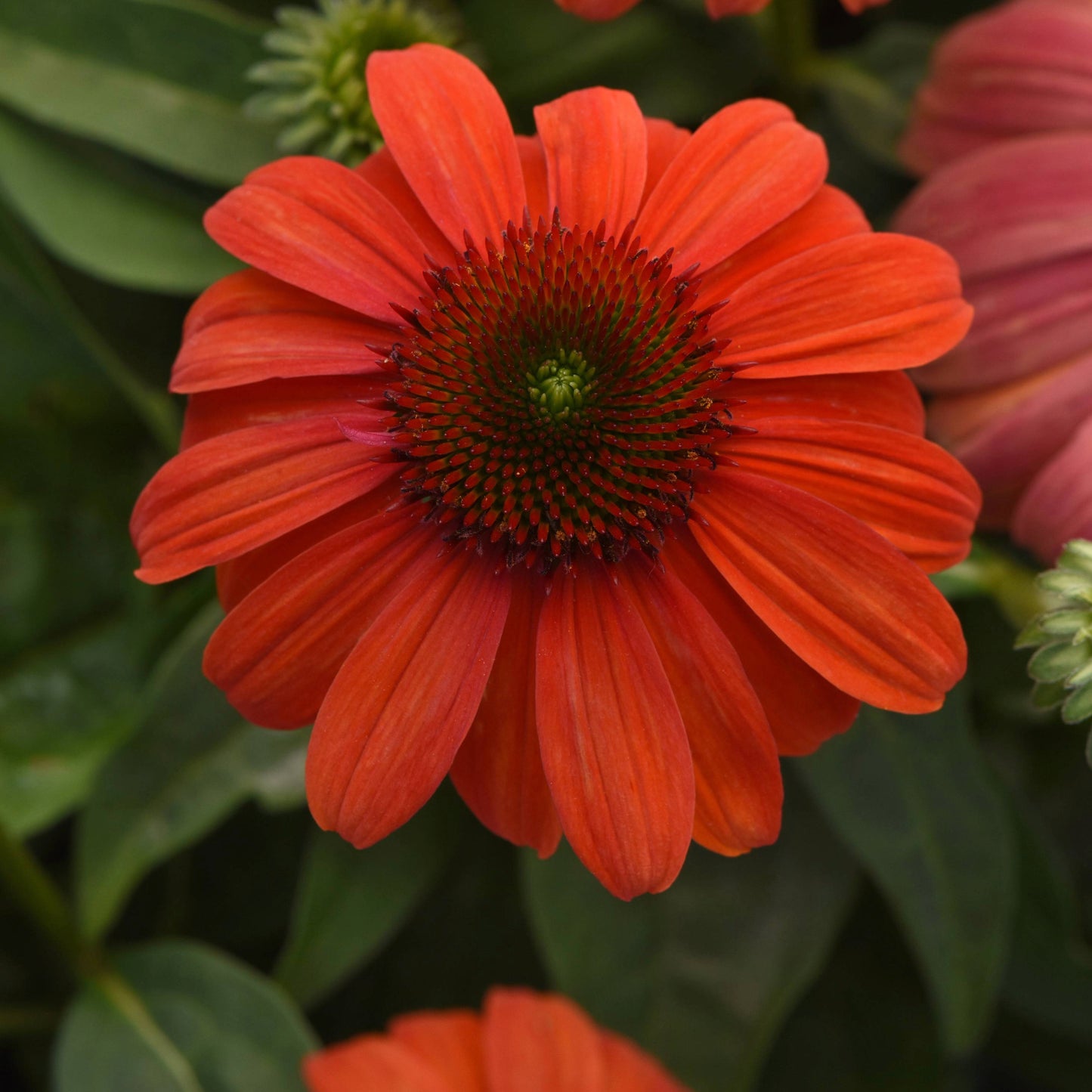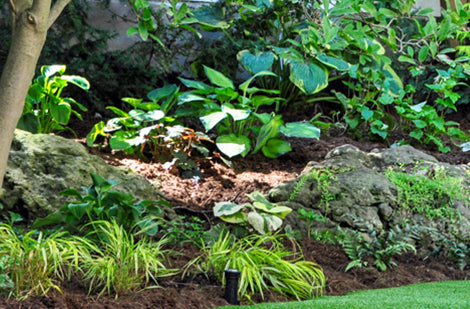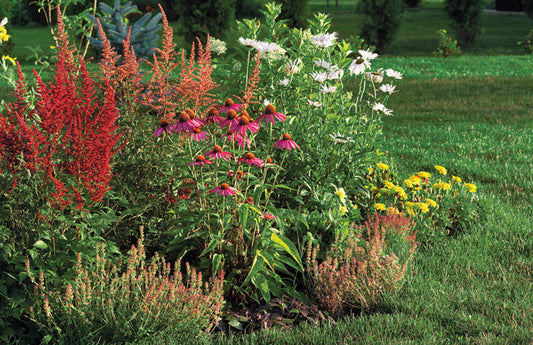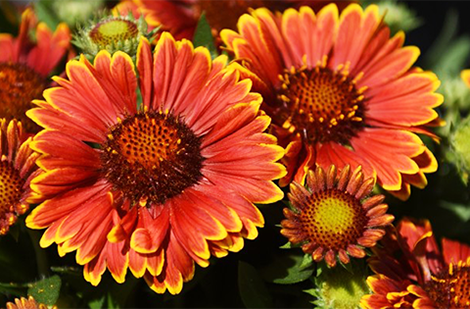Echinacea x hybrida Sombrero® 'Mandarin Mambo'
Echinacea Sombrero® 'Mandarin Mambo' - Sombrero® Mandarin Mambo Coneflower
Echinacea Sombrero® 'Mandarin Mambo' - Sombrero® Mandarin Mambo Coneflower
Exposure
- Sun
Rusticity
Bloom time
- May
- June
- July
- August
- September
- October
- Evolving orange to peach colours
- Abundant first-year flowering
- Attracts butterflies
- Deer resistant
- Easy care
Let the colourful rhythms of Echinacea Sombrero® 'Mandarin Mambo' enchant you, a vibrant perennial that transforms your garden into a true celebration! Its bold, bright orange flowers gracefully fade to a lovely peach tone, offering a breathtaking colour spectacle. Remarkable for its amazing first-year flower coverage, this compact and sturdy plant promises unparalleled dynamism to your sunny landscapes.
Characteristics
- Foliage: Dense, dark green foliage, forming a well-filled basal clump. Foliage is deciduous (disappears in winter).
- Flowering: Produces amazing, bold, bright orange flowers that fade to a lovely peach colour. Petal overlap features prominently, offering exceptional flower coverage. Blooms start late spring and continue through summer.
- Light Requirements: Needs full sun (6+ hours of direct sunlight) to thrive.
- Habit: Sturdy, compact, and upright plant with a mounding habit.
- Growth: Moderate growth rate. Reaches a garden height of approximately 46 to 51 cm (18 to 20 inches) and a spread of 56 to 61 cm (22 to 24 inches).
- Humidity: Requires average water needs. Tolerates drought.
- Soil: Adapts to average soil. Coarse and slightly mineral soils are best, provided they are well-drained.
- Temperature: Very hardy. Tolerates winter cold well. Hardiness Zones 4b to 9b.
- Watering: Average watering. This plant is drought tolerant once established, making it ideal for sun-loving, low-water gardens.
- Resistances: Deer resistant and drought tolerant.
Usage
- Types of Use: Excellent as a border plant, in mass plantings, and perfect for containers. Its flowers are great for cut flower and dried flower arrangements.
- Decorative Benefits: Its bold colours and abundant blooms create a remarkable visual impact. It attracts butterflies, hummingbirds, and bees in summer, and its spent blooms' seeds provide food for songbirds in winter, adding constant animation to the garden.
Maintenance
- Fertilization: Generally, little to no fertilization is needed. Fertilize only when necessary.
- Pruning: To encourage new blooms, remove spent flowers. Leave the seed heads on the plant in the fall for winter interest and as a food source for birds.
- Plantation:
- Spacing: Approximately 46 to 56 cm (18 to 22 inches) apart to allow for good air circulation and optimal development.
- Depth: Plant at the same depth as it was in its container.
- Period: Spring is the ideal time for planting.
Plant details
Dimensions
Dimensions
Characteristics
Characteristics
Habit:
- Upright
- Mounded
Flowering colours:
- Orange
- Peach
Plant needs
Plant needs
Watering:
- Tolerates dry, well-drained soil
Maintenance:
- Easy
Soil requirement:
Features
Features
Resistance:
- White-tailed deer
- Drought
Attract:
- Butterflies
- Hummingbirds
- Pollinators
- Birds
Use:
- Border
- Container
- Cut flower
- Dried flower
- Block
Attribute:
- Cut Flower
- Dried Flower
- Long Blooming
- Native to North America




Related articles
-

Perennials for all occasions
Read the articleOsez créer des associations inédites qui sauront refléter votre personnalité, même si pour cela vous deviez déplacer certaines vivaces pour mieux les mettre en valeur.
-

Landscaping with perennials
Read the articleVariétés à découvrir, la tomate se savoure crue, en sandwich, en bruschetta ou en salade. Cuite, c'est l'ingrédient de base de sauces, soupes et salsas.
-

Perennials proper maintenance: cut and fertilize
Read the articleLa grande popularité des vivaces vient du fait qu'après avoir été oubliées pendant des mois au cours de l'hiver, elles réapparaissent sur la scène plus énergiques et surprenantes que par...
-

How to plant perennials in your garden
Read the articleEn pénétrant au jardin, ce sont souvent les plantes vivaces que l’on remarque en premier. Un massif de sauges, d’hémérocalles, d’astilbes, d’échinacées ou de lavande offre un spectacle d’une beauté...












